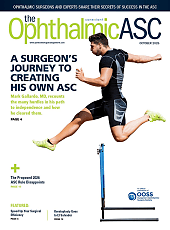You have invested a tremendous amount of time, money, and effort into your practice, so it is imperative that you consistently hire the right team members to ensure your success. This can be a particular challenge during the ongoing, nationwide shortage of qualified ophthalmic technicians.
Even if you have a high employee-retention rate, you undoubtedly will need to replace an employee periodically. Communication is key to finding the right person for your organization, and the most important types of communication with potential candidates are the resume and the application form. Here, I will discuss how they differ.
Dual Communication Tools
Please keep in mind that a resume and a job application are not the same thing. A resume is an applicant’s communication tool, while the application form is the employer’s communication tool. Resumes allow candidates to creatively and selectively highlight their qualifications and experience, whereas a job application focuses on the practice’s priorities and requirements for a position. The latter should include specific information regarding an applicant’s current and previous employers; salary history; and references, therefore providing the prospective employer with more key information than a resume typically offers.
Some practitioners may believe that requiring a candidate to submit both a resume and an application is too time consuming and/or cumbersome. In fact, a legally compliant and properly formatted application form will save the practice money in both the investment of time and in potential legal fees. Only candidates that you invite to be interviewed will need to fill one out. An application can also help you weed out problematic candidates before you make the mistake of bringing them onboard.
Two Main Benefits of a Formal Application
A formal application offers two main benefits to your practice during the hiring process. First, it streamlines the candidate’s work history and skills, providing the interviewer with specific information to use in crafting pertinent questions.
Second, a job application is considered a legal document, whereas a resume is not.
A properly crafted application allows for a prospective employer to legally check references; conduct background screenings (where permissible); and formally document the consequences of any misleading statements submitted by the candidate. In addition, it can help you to identify red flags about the candidate that a resume may not present.
One red flag is inconsistency between what the applicant writes on the application and what their resume indicates. Another red flag can be the candidate’s handwriting, which tells a story of their character: Is it legible? Is it cohesive? Was care taken when filling in the application, or did they write only a few words? Did they complain about having to submit an application?
You do not have to reinvent the wheel when developing a legally compliant application form—there are many affordable and reputable resources available to help with that. You can consult a certified human resources professional; you can use a professional human resources service; or you can speak with an attorney who specializes in employment law in your state.
Conclusion
As a closing note, the Equal Employment Opportunity Commission (EEOC) requires both resumes and applications to be kept on file for at least 1 year from the date of the hiring decision. I would highly recommend these be kept in alphabetical order by date. This is very helpful if you need to go back to the records. (For instance, checking to see if you have previously interviewed a current candidate.) OM









